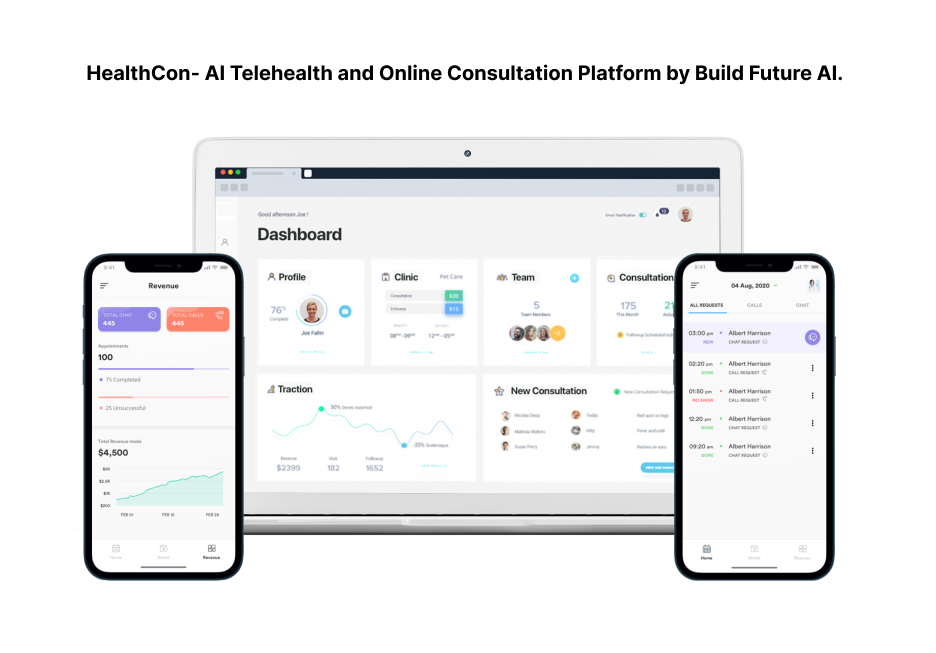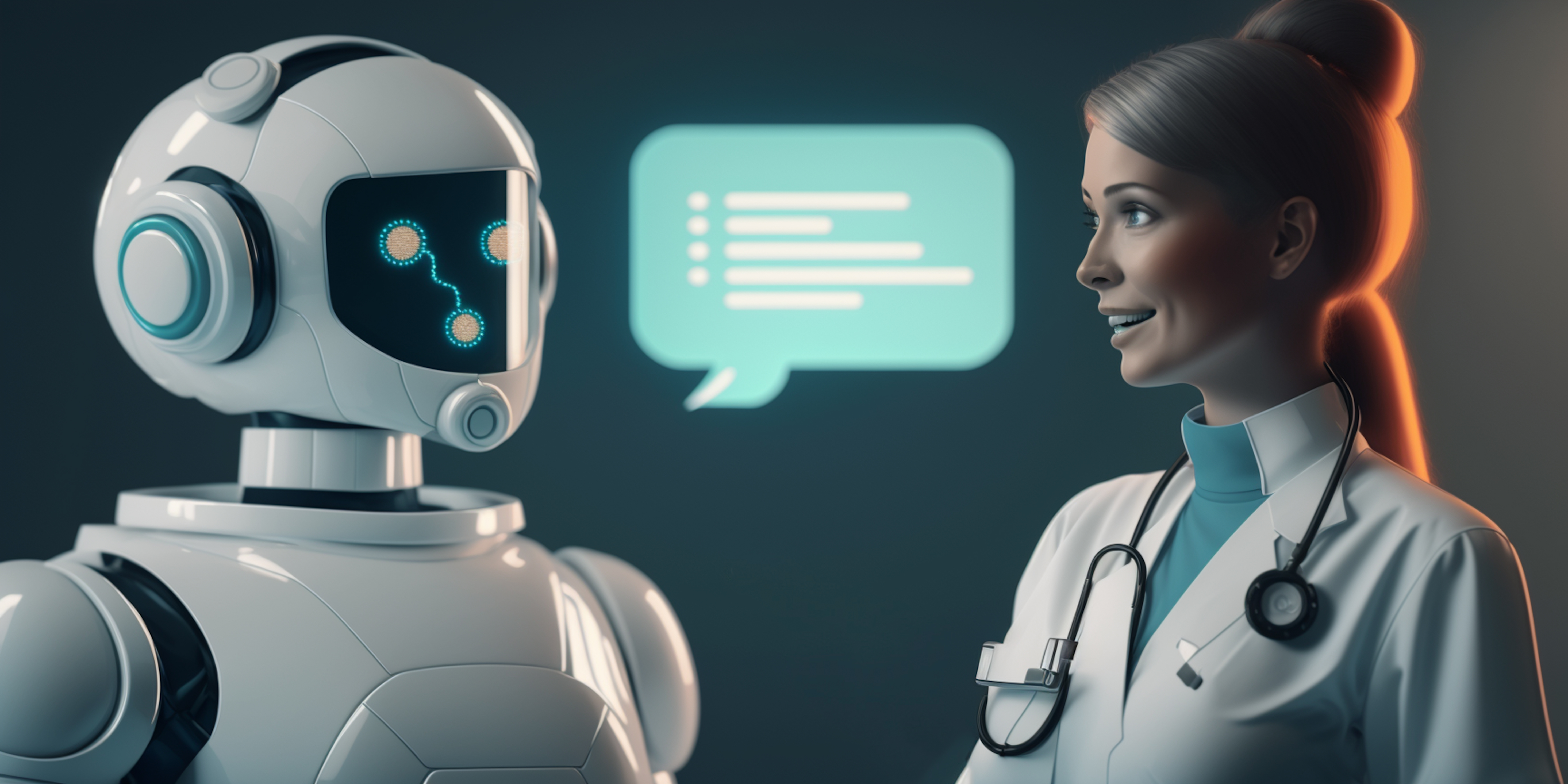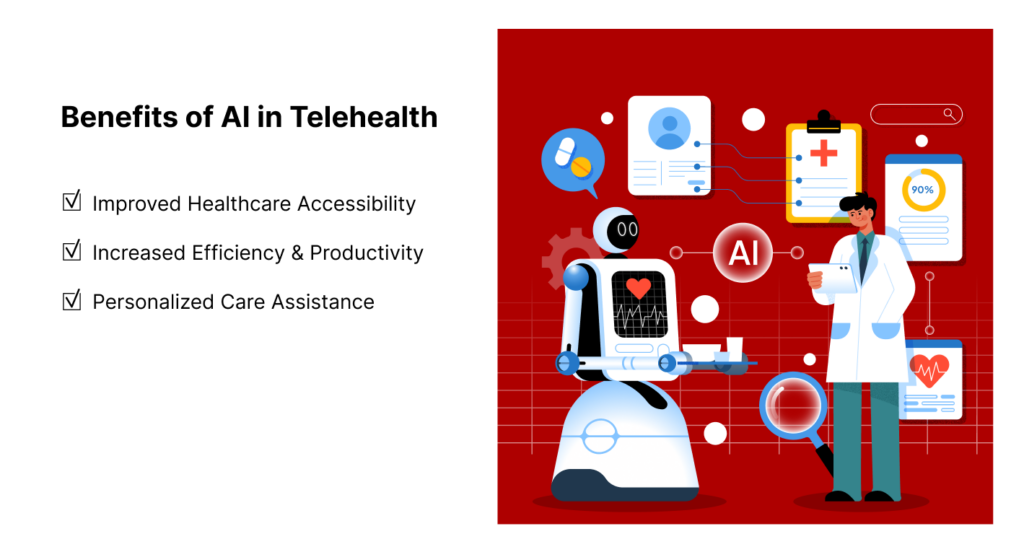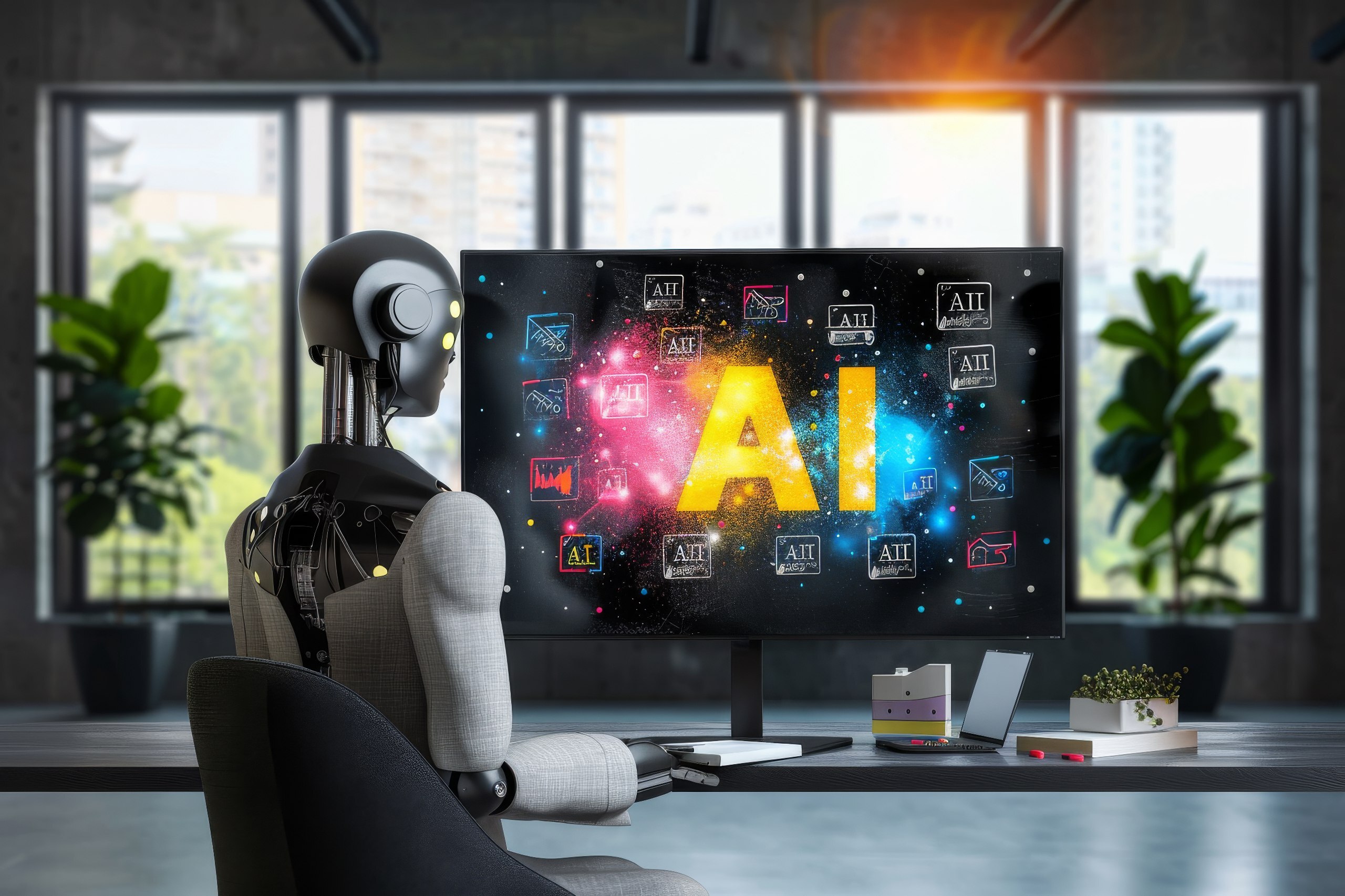The rise of artificial intelligence in various domains, including manufacturing, logistics, supply chain, education, and administration, has transformed running operations by automating tasks and providing data-driven insights. These advancements have saved crucial resources like time and money, enhanced accuracy, and improved problem-solving and decision-making for human beings. However, few may have an idea of the transformative potential of AI in healthcare. Having suffered the consequences of the pandemic, people now understand the importance of health, healthcare and its accessibility. Therefore, due to the advancements of technology in healthcare and owing to the challenges that people encountered during COVID-19, the field of telemedicine skyrocketed to make health treatments accessible to all!
In this blog, we will talk about Telehealth or Telemedicine and the role of artificial intelligence in Telehealth services.
What is Telehealth?
Telehealth or telemedicine refers to providing medical treatment or information to patients remotely with the help of smartphones, web cameras, sensors, and wearables. This helps overcome the challenges of healthcare accessibility due to constraints like time, distance, and difficult terrain, enabling cost-effectiveness and global accessibility. Telehealth has proved to be a boon in times of emergency, like the COVID-19 pandemic, earthquakes, floods, etc. In times where, due to chronic diseases patients require longer interactions with healthcare professionals, having all-time telehealth support to patients has increased their lifespans and helped them manage their diseases well.
Forms of Telehealth:
Historically, telehealth has been divided into two forms- Synchronous and Asynchronous telehealth. However, a third form called Remote Monitoring has also emerged and gained recognition over time.
Synchronous Telehealth:
Synchronous telehealth is a form of telehealth that involves real-time communication between the patient and the doctor through various digital modes like telephone consultations or video conferencing. It resembles face-to-face interaction but is remote. Also, it allows the patient to get the immediate attention of the doctor and the required treatment.
Asynchronous Telehealth:
Asynchronous telehealth, also called “Store and Forward,” refers to sharing the patient’s data, such as medical images, videos, or messages, with the medical professional for later review and assessment. This does not require simultaneous consultation and allows the doctor or the healthcare professional to respond to the patient’s requests at their convenience.
Remote Monitoring:
This form of telemedicine gives continuous access to patient’s data to the medical professional through distributed devices that leverage the Internet of Things (IoT) technologies. This is quite helpful for patients who have critical medical conditions and require all-time medical attention. The data is collected using various sensors, wearables, or smartphone apps to monitor the signs and symptoms of the patients. This allows the doctor to check the patient’s condition, identify trends, and intervene if required.
The Role of AI in Telehealth
Artificial intelligence has the potential to enhance the capabilities of healthcare professionals, increase efficiency, expand reach, and improve the safety of telemedicine. By integrating AI into healthcare and telehealth, we can reduce errors in medical diagnostics, which are currently at a high rate in healthcare provision, thereby enhancing workflow efficiencies.
Moreover, the ability of AI to process and analyze vast amounts of data to build data-driven insights and predictions can assist healthcare professionals and physicians in decision-making and various tasks to enhance healthcare delivery. Most of the doctor’s time is consumed on electronic health records (EHRs), and hence, the incorporation of AI can help in saving doctor’s time and devote the same to patient treatment. Also, natural language procession (NLP) can transform the way of interaction with technology. Using NLP’s speech recognition, the use of keyboards can also be eliminated, and doctors can just talk to the system.
Following are the four emerging ways in which AI is impacting the field of telemedicine:
- Monitoring Patients.
- To incorporate information technology into healthcare
- To use intelligent systems for diagnosis and assistance.
- Cooperative data analysis.

Common applications of AI in Telehealth
The use of AI in telemedicine has boosted the efficiency, accessibility, and quality of telehealth services and has enhanced diagnostic accuracy, enabling remote patient monitoring, analysis of medical images, providing virtual triage, medical consulting services, and more.
Below are the use cases of AI in telemedicine and healthcare:
Medical Image Analysis

AI and machine learning algorithms can analyze large amounts of data, including medical images such as CT scans, X-rays, and MRIs. Therefore, AI-driven faster analysis assists radiologists in making accurate diagnoses and enhances their efficiency to serve more patients. Thus, AI facilitates faster treatment decisions and accelerates the diagnostic process.
Remote Patient Monitoring and Diagnosis.

AI can store and analyze individual patient data and large amounts of historical data, which can help healthcare professionals and patients in the early diagnosis of underlying disease conditions, leading to effective and less invasive medical treatments.
Moreover, AI-powered devices, sensors, and wearables can detect real-time patient data, including blood pressure, heart rate, ECG signals, oxygen levels, and glucose levels, transferring the same to doctors for continuous monitoring and analysis. This helps to provide attention to patients with critical conditions, allowing timely intervention of the medical professional to treat the patient’s deteriorating condition as soon as possible;
Virtual Triage.

AI and machine learning algorithms can analyze patient’s data, including the symptoms, and prioritize the cases according to the urgency, allowing patients with critical conditions to get faster treatments and consultations from medical professionals, thereby enhancing the healthcare workflow. Moreover, receiving timely care and reduced wait time enhances patient satisfaction and makes the process smoother.
Democratizing Health Access.

Telemedicine has eliminated geographical barriers like distance, travel duration, and time zone differences that used to limit the access of healthcare facilities to people. Now, patients from any place, whether urban or rural, can get medical attention and treatment anytime without needing to travel long distances. Moreover, with the integration of AI into telehealth, remote diagnosis, monitoring, and medical image analysis have become possible. Therefore, telehealth not only saves money and time but also provides quality and timely medical attention to people.
Healthcare Chatbots and Virtual Assistants.

The use of natural language processing(NLP), the branch of AI that makes the machines understand and respond to human language, in telemedicine helps in providing patients with an AI conversational bot or chatbot that helps them with basic medical advice, schedule appointments with the healthcare professionals, and solve their queries and problems. This way, patients get a 24/7 virtual assistant, which enhances their healthcare experience and satisfaction. In addition, healthcare chatbots also reduce the stress on healthcare staff, allowing them to focus on more complex cases.
Medical Training.

Healthcare information technology (HIT) has transformed medical training by providing immersive and realistic experiences. With the help of HIT, medical practitioners prepare with crucial skills through patient interactions by getting hands-on with the new technologies and understanding complex healthcare systems. One of the examples is the use of virtual reality solutions that let medical professionals get realistic experiences, enhancing their learning and skills.
Implementation of AI in Telehealth:
The following are the steps required to implement AI in Telehealth:
Identify the purpose:
Determine the specific use cases where AI can be used efficiently to boost healthcare processes, like automated health record maintenance, triage, remote monitoring, image analysis, etc. Implementing AI should be prioritized according to the purpose and in the areas that can enhance patient care, optimize workflow, and support healthcare professionals.
Data Acquisition and Preprocessing.
Having reliable, high-quality, and huge amounts of medical data while training explainable AI systems to ensure accuracy, trust, safety, and security is important. Therefore, access to healthcare data from hospitals, healthcare organizations, and existing databases must be ensured. New data should also be collected to accomplish data preparation that can lead to accurate and reliable AI algorithm development.
Algorithm Development.
Data scientists and AI developers come together to develop algorithms customized to the purpose and requirements for which AI systems are needed. Various machine learning techniques like natural language processing (NLP), computer vision (CV), neural networks (NN), and deep learning techniques (DL) are used to develop algorithms tailored to the healthcare workflow.
Integration and Testing.
After the model is developed, it is integrated into the AI telehealth web portal or application via various web, mobile, and desktop technologies. Rigorous testing is done to validate the quality of the AI model and check its authenticity, accuracy, and seamless integration with the healthcare workflow.
Continuous Improvement.
The AI model should constantly be updated and monitored to improve its effectiveness and accuracy over time. Feedback from healthcare professionals and patients should be surveyed from time to time to identify areas of improvement.
Benefits of AI in Telehealth
The above cases of AI in telehealth and healthcare make it clear that integrating can improve the experience for both healthcare professionals and patients, as well as the outcomes. Its ability to provide precise reports, quicker response to the patient’s queries, speed up the treatment process, and reduce the cost of the treatment make it a profitable investment for businesses in the healthcare industry. Following are some of the benefits explained in detail:

Improved Healthcare Accessibility
With remote medical consultations and diagnosis, telehealth has broken down the geographical barriers to providing healthcare services to everybody. Moreover, incorporating AI in telehealth, virtual chatbots, and 2D-3D simulations has helped address the healthcare workforce shortage. Conversations with healthcare chatbots are similar to the ones with nurses and doctors. Hence, they provide basic and immediate medical advice to the patients, thus comforting them and improving their mental well-being.
Increased Efficiency & Productivity
With the help of AI, most of the tasks get automated, and processes get optimized, which reduces the burden on the administration, leading to an overall increase in the efficiency and productivity of the employees. Some tasks that AI transforms in the healthcare industry are- auto-filling of patient forms, easy appointment bookings, and automated maintenance of electronic health records. Hence, this automation streamlines the processes and allows healthcare providers to serve more patients.
Personalized Care Assistance
AI analyzes vast amounts of patient data, including medical reports, past treatments, etc, and uses the same to build personalized care plans, treatment recommendations, and decision-making support for medical professionals. Thus, this data analysis helps in the early detection of underlying diseases, more accurate diagnosis, customized treatment, and improved outcomes. AI records these observations in various formats, such as medical data visualization forms like charts, graphs, and textual reports.
Opportunities and Challenges of AI in Telehealth
As easy as artificial intelligence in telehealth seems, it comes with many challenges, from which data privacy and security top the list. Due to the sensitivity of healthcare information, ensuring robust security measures, encryption, and compliance with regulations to keep the data safe is very important. Moreover, ethical considerations like bias and transparency must be acknowledged for fair and equitable healthcare practices. All these challenges can be achieved by the implementation of the following three approaches:
AI Explainability in Healthcare
AI explainability in healthcare is important as it explains why the AI algorithm reached a certain decision, allowing healthcare professionals to understand, interpret, and cross-check AI’s decision-making process for biases and errors. This fosters trust, validity, and accountability and enables the doctors to gain transparency into the reasoning ability of the AI model, hence keeping the patient’s safety and health in check.
Ethical AI in Healthcare:
Ethical AI in healthcare ensures the responsible development and utilization of AI systems while prioritizing patient’s security and privacy while upholding fairness, transparency, and accountability. It follows patient-centric approaches, improving medical decision-making results and assisting healthcare professionals. By considering the ethical aspects, AI in telehealth and healthcare empowers healthcare providers to build trust and deliver equitable and quality healthcare treatments while keeping the patient’s safety in check.
AI Governance
AI governance helps in building frameworks, and policies for responsible use of AI tools and software. It ensures that the development and deployment align with the ethical principles, legal rules, and societal values in healthcare. AI governance promotes transparency, trust, fairness, and safety and addresses concerns related to privacy, bias, and algorithmic accountability. Robust AI governance enables healthcare professionals to tackle ethical challenges and ensures the responsible use of artificial intelligence while providing reliable healthcare services.
The Future of AI in Telemedicine
The future of telehealth is intertwined with the use of artificial intelligence and is brimming with countless opportunities. In the future, we can expect much more efficiency, accuracy, and accessibility. As we continue to witness advancements in technology and its integration into healthcare, the landscape of telemedicine will undoubtedly evolve, allowing patients and healthcare providers to leverage greater benefits. AI-driven solutions will unlock new possibilities and revolutionize the way healthcare services are delivered, enabling quality care to reach individuals despite geographical barriers. Hence, the future of AI in telehealth is not just promising but transformative.
Looking for the best AI development, integration, and consulting company? Look no further because Build Future AI has it all!




